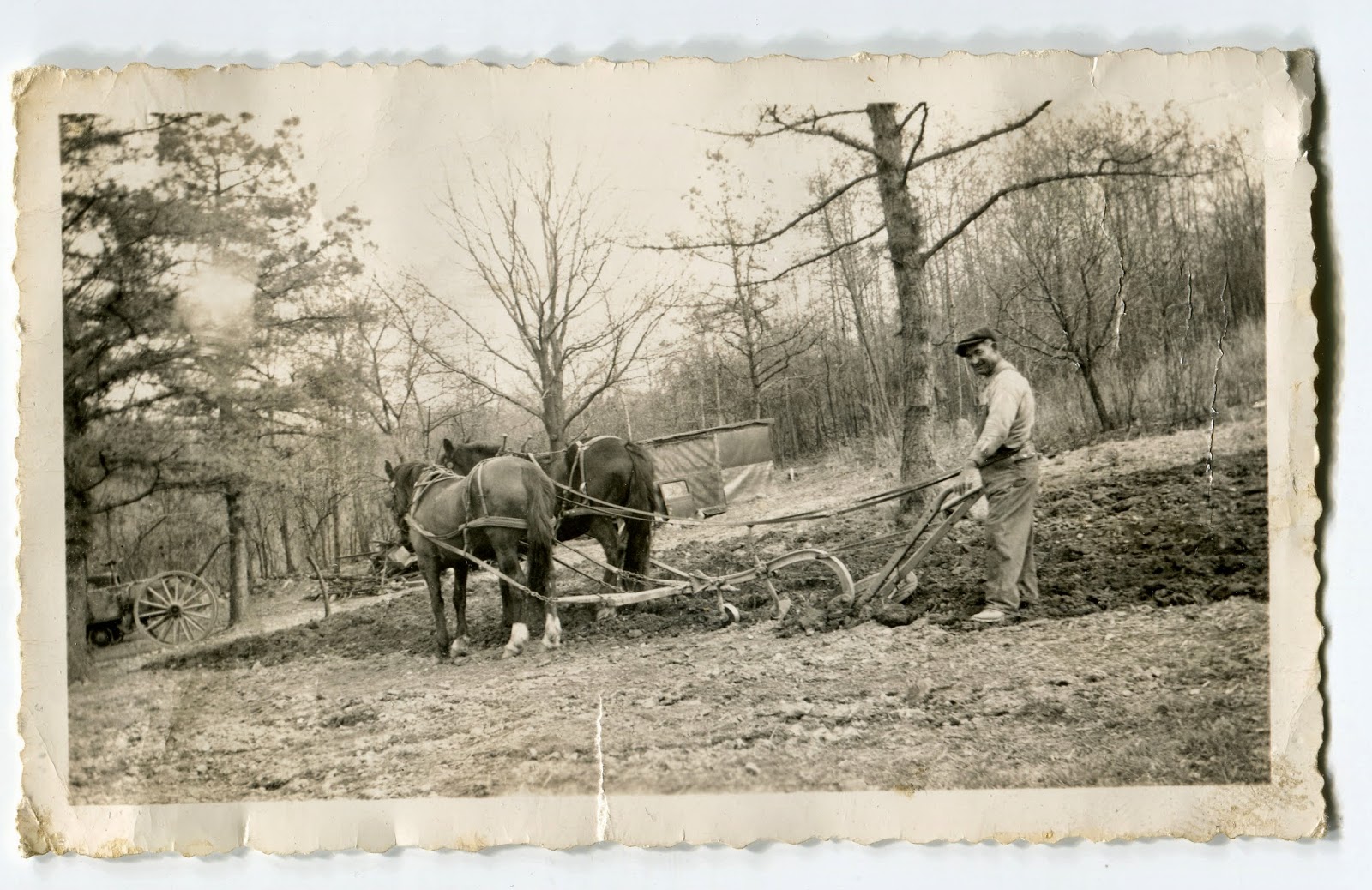William Iannello, or Willie to his family, was born on Plainfield Avenue in Berkeley Heights in 1927. Willie remembers spending a lot of his time with his grandmother Giulia Muzzapapa. They canned food together and made sausages.
He recalls that when he was just a small boy, he would follow his father Rosario as he plowed the fields with a horse-drawn plow on their farm in Berkeley Heights.

Rosario was one of the original firemen in the Berkeley Heights Fire Department, and also established a milk delivery service.
.jpg)
Some of Willie's early memories include those of the Great Depression. He recalls “some stranger sitting at the table, because the railroad station was there and they would come in from New York, carrying a couple bundles, they had these wooden handles with a piece of wire and hook on them.” Willie's grandmother would invite them in for a meal.
In 1933, with many people out of work, members of the extended Iannello family found work at the brickyard in Berkeley Heights. The brickyard was off Snyder Avenue, near today's Lone Pine Drive. On February 27th, disaster struck when the factory boiler exploded, due to frozen pipes.

Willie attended the Columbia School in Berkeley Heights from grades 1 to 7. He dropped out because he had lost interest and wanted instead to work on the farm. “the principal, his name was Mr. Carter, he came out and was talking to my father and he said ‘He’s got to come at least an hour a day.’ So I used to go an hour a day.”
Later, Willie was drafted after the Second World War had ended, but he got a “farm deferment” and did not serve. His future brother-in-law Daniel Maiurro was sent to Europe and his cousin, Rocco R. Muzzipapa, was severely wounded in France during the weeks after D-Day.

Willie recalled that “during the war, a Grumman hell cat, [airplane] crashed just north of Berkeley Heights, toward Gillette…we went up there, and this old guy up there tried to keep the parachute. The plane crashed about three or four miles from where he parachuted out…they had military police around there, and I wanted to pick up a piece of plane, that’s all there was left…so they took down the wires and the electricians were there, and he was picking up pieces and putting them in his pouch, and he gave me a piece of the plane.”
Willie remembered the air raid drills in Berkeley Heights: "The sirens would go off, and you’d have to douse all the lights. You had to paint the headlights on the cars black with only a little bit of an opening for light, you know and all the lights had to be turned off.”
In 1951, Willie married Helen Christina Ann Morgan, also of Berkeley Heights, who he met at a dance. Before they were married, Willie broke his foot square dancing. He remembers, “I left [Helen] right on the floor, she didn’t know what happened to me.” Because of this injury, he was unable to serve during the Korean War. “I went to a physical, and I had already passed the physical, and I was supposed to go to get sworn in, when I got to the bus, we were supposed to meet at the bus, he [the Sergeant at the bus] said ‘we can’t take you like that.’ But I showed up, if I didn't show up they would have come after me.”
Willie and Helen left Berkeley Heights in 1953 with their two children.
Photos and information provided by Willie's grandson, Andrew Dalton



